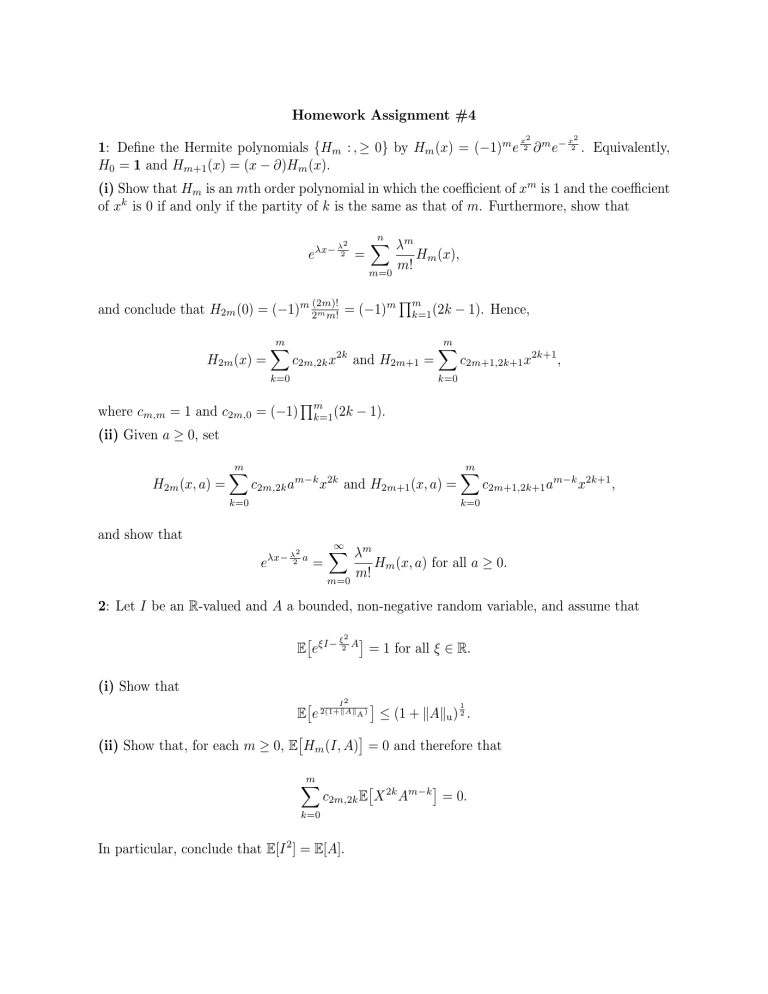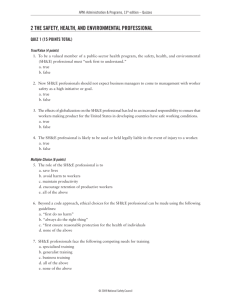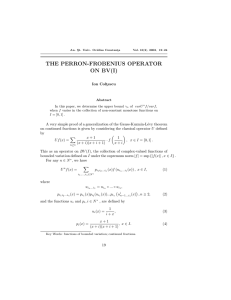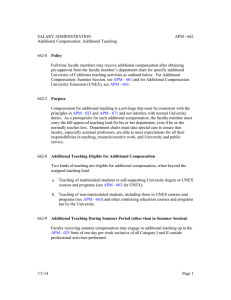Homework Assignment #4 1: Define the Hermite polynomials {H (x) = (−1)
advertisement

Homework Assignment #4
1: Define the Hermite polynomials {Hm : , ≥ 0} by Hm (x) = (−1)m e
H0 = 1 and Hm+1 (x) = (x − ∂)Hm (x).
x2
2
∂ m e−
x2
2
. Equivalently,
(i) Show that Hm is an mth order polynomial in which the coefficient of xm is 1 and the coefficient
of xk is 0 if and only if the partity of k is the same as that of m. Furthermore, show that
2
e
λx− λ2
n
X
λm
=
Hm (x),
m!
m=0
m
and conclude that H2m (0) = (−1)m 2(2m)!
m m! = (−1)
H2m (x) =
m
X
c2m,2k x
2k
Qm
k=1 (2k
and H2m+1 =
− 1). Hence,
m
X
c2m+1,2k+1 x2k+1 ,
k=0
k=0
where cm,m = 1 and c2m,0 = (−1)
Qm
k=1 (2k
− 1).
(ii) Given a ≥ 0, set
H2m (x, a) =
m
X
m−k 2k
c2m,2k a
x
and H2m+1 (x, a) =
m
X
c2m+1,2k+1 am−k x2k+1 ,
k=0
k=0
and show that
2
e
λx− λ2 a
∞
X
λm
=
Hm (x, a) for all a ≥ 0.
m!
m=0
2: Let I be an R-valued and A a bounded, non-negative random variable, and assume that
ξ2
E eξI− 2 A = 1 for all ξ ∈ R.
(i) Show that
I2
1
E e 2(1+kAkA ) ≤ (1 + kAku ) 2 .
(ii) Show that, for each m ≥ 0, E Hm (I, A) = 0 and therefore that
m
X
c2m,2k E X 2k Am−k = 0.
k=0
In particular, conclude that E[I 2 ] = E[A].
(iii) Assume that m ≥ 2. Using Hölder’s inequality and the fact that
1
1
aθ b1−θ ≤ θt θ a + (1 − θ)t 1−θ b
for any a, b ≥ 0, θ ∈ [0, 1], and t > 0, show that
E[I 2m ] ≤ (−1)m+1
where
fm (t) =
m−1
X
(2m)!
E[Am ] + fm (t)E[I 2m ] + gm (t)E[Am ],
m
2 m!
|c2m,2k |t
m
k
and gm (t) =
k=1
m−1
X
m
|c2m,2k |t m−k .
k=1
Conclude that if sm > 0 is determined by fm (sm ) = 12 , then
E[I
2m
]≤2
(2m)!
(−1)m+1 m
2 m!
+ gm (sm ) E[Am ].
(iv) Again assume that m ≥ 2, determine tm > 0 by gm (tm ) =
E[Am ] ≤
(2m)!
2m+1 m! ,
and show that
2m+1 m!
(−1)m+1 + fm (tm ) E[I 2m ].
(2m)!
By combining the preceding, one sees that, for each m ≥ 1 there is a κ2m ∈ [1, ∞) such that
m
2m
κ−1
] ≤ κ2m E[Am ].
2m E[A ] ≤ E[I
3: Let B(t), Ft , P be an RM -valued Brownian motion, η an RM -valued, {Ft : t ≥ 0}progressively measurable function for which
t
Z
2
P
|η(τ )| dτ < ∞,
E
0
and
Z
Iη (t) =
t
η(τ ), dB(τ )
0
RM
.
Show that
P
κ−1
2m E
" Z
!m #
ζ
|η(τ )|2 dτ
≤ EP Iη (ζ)2m ≤ κ2m EP
0
for all m ≥ 1 and {Ft : t ≥ 0}-stopping times ζ.
" Z
0
!m #
ζ
|η(τ )|2 dτ











